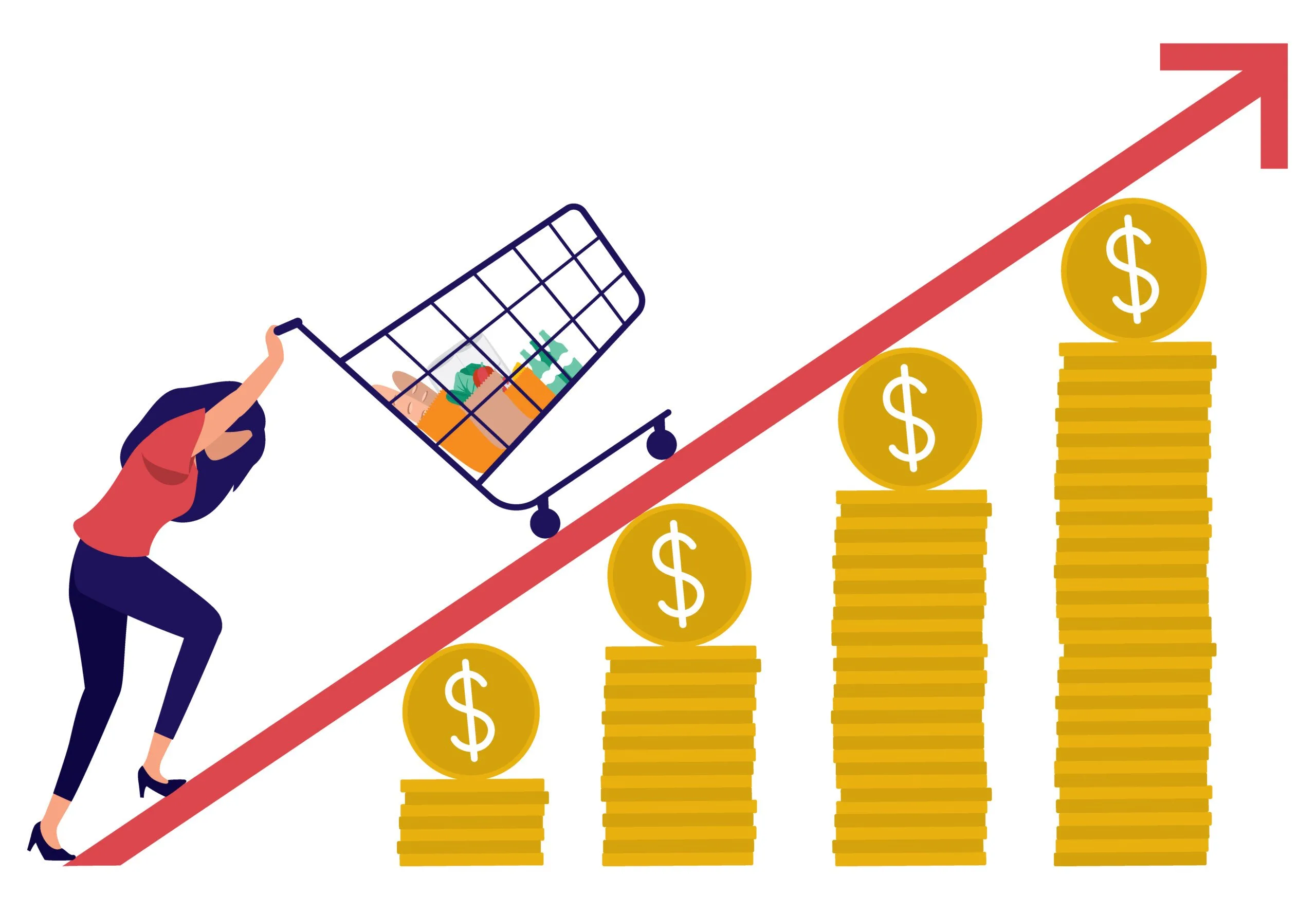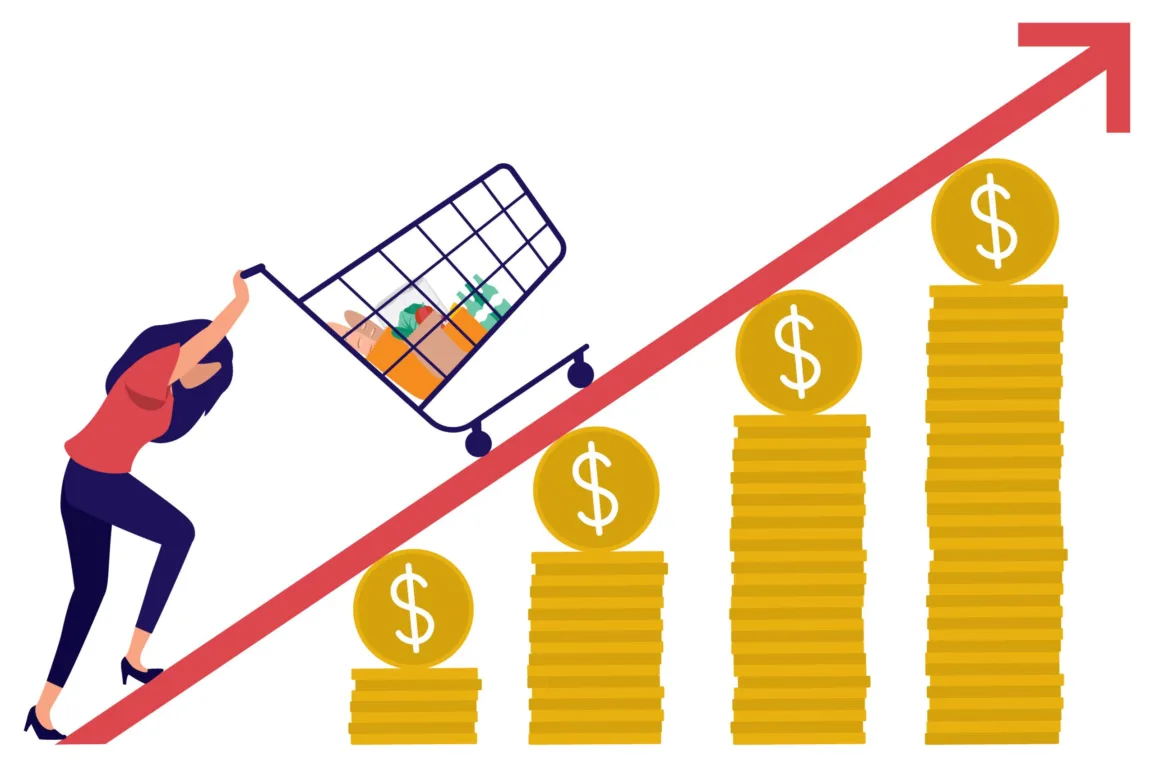
Latest data shows median income fell behind inflation, tax credit expirations, increased poverty
Child poverty more than doubled nationwide by a key measure between 2021 and 2022, while median household income in New Hampshire and nationally was eroded by inflation, according to a new census report.
Last month, the U.S. Census Bureau released the Current Population Survey and the American Community Survey that provide insights into the economic well-being of both Granite Staters and all U.S. residents.
After accounting for temporary federal government assistance provided through tax credits, poverty rose substantially in 2022 after falling in 2020 and 2021, largely due to federal supports for households and the economy during the COVID-19 pandemic, the data shows.
Two poverty rates provide different insights
The poverty rate represents the portion of the population with very limited incomes. Both the CPS and the ACS calculate poverty rates based on the Official Poverty Measure, but only the CPS calculates the Supplemental Poverty Measure.
From 2009 to 2019, the SPM stayed somewhat higher than the OPM nationally, with some variation between states and across years. However, in 2020 and 2021, the SPM dropped dramatically below the OPM.
This change was largely due to the introduction of federal assistance, in response to the COVID-19 pandemic, that came in the form of tax credits; those credits included the Economic Impact Payments, which were sometimes called “stimulus checks,” and the American Rescue Plan Act’s expansions to the Child Tax Credit, the Earned Income Tax Credit, and the Child and Dependent Care Credit. These tax credits are accounted for in the SPM, but not in the OPM, yielding substantially different poverty rates while the credits were in effect.
Between 2021 and 2022, the national SPM poverty rate increased from 7.8% to 12.4%, or 4.6% age points (a 59% increase), as key aid expired and prices for goods and services, including housing and energy, increased.
The expanded Child Tax Credit, especially the Advance Child Tax Credit payments, substantially reduced poverty for children as measured by the SPM. The expiration of that temporary tax credit resulted in a rebound in child poverty, which rose from 5.2% to 12.4%, between the SPM rates calculated for 2021 and 2022. This change was much larger than the rate increases for adults, showing the effectiveness of the targeted tax credits at reducing poverty specifically among children.
Certain structurally underserved groups, including racial and ethnic minority groups, also experienced significant increases in SPM poverty. Poverty among Native Americans increased an estimated 10.8% age points, approximately double the 2021 rate, while poverty rose 8.1% age points for Hispanic residents and 5.9% for Black residents.
Lower levels of educational attainment correlated with higher increases in poverty, including an 8.2% age point increase in the poverty rate for people age 25 years and older who did not have a high school diploma. For adults age 18 to 64 years living with a disability, the poverty rate increased 7.1% age points, while individuals without a disability saw an increase of 3.7% age points.
The CPS allows for a granular understanding of the impacts of key elements on poverty, including public policies, at the national level. For example, Social Security has a substantial impact on poverty rates by supplying income to large numbers of older adults who might not otherwise have income; in 2022, an estimated 28.9 million more U.S. residents would have been in poverty without Social Security, including 20.1 million more adults age 65 years and older.
During 2021, Economic Impact Payments reduced the SPM poverty rate by 2.7% age points, and refundable tax credits reduced it by 2.9% age points. The Economic Impact Payments were not repeated in 2022, and as a result had no effect, while the impacts of refundable tax credits dropped to a 1.9% age point reduction in the SPM poverty rate.
Unemployment insurance payments, which impact both the SPM and OPM rates, were also a much smaller factor in 2022 than in 2021, when more people were receiving unemployment compensation. Medical and work expenses, as well as federal income tax payments, increased poverty more in 2022 than in 2021.
Measuring poverty at the state level
In New Hampshire, neither the ACS nor the CPS provided detailed SPM poverty estimates. Poverty at the state level is typically measured with the OPM, using ACS data, on a year-over-year basis. As a result, the significant reductions in poverty caused by federal tax credit enhancements are not shown in the New Hampshire data by subgroup, as those tax credits do not count in the ACS calculation of household incomes.
The OPM poverty rate for children declined in New Hampshire between 2021 and 2022, dropping to an estimated 6.9%, while the poverty rate for the population overall remained at 7.2% in 2022, the same estimated rate as in 2021.
The OPM is set for common levels among the 48 contiguous U.S. states and is based on family size. The OPM poverty-level annual income threshold for 2022 is $15,225 for an individual less than 65 years old, and $23,556 for a family of three with one child.
About 98,000 Granite Staters lived in poverty, which is approximately the estimated 2022 populations of Claremont, Concord, Laconia and Portsmouth combined. Approximately 48,000 people lived at less than half of poverty-level income, while an estimated 247,000 people, nearly one in five residents, lived with less than twice poverty-level incomes.
Some discrepancies exist between different population groups in New Hampshire. While the data for 2022 only offer limited insights into populations and geographies within the state due to limited data collected, the poverty rate for Hispanic or Latino Granite Staters was about twice as high as the rate for all residents in 2022.
The poverty rate for Black or African American Granite Staters is about 2.5 times higher than for white residents, while rates are about twice as high for Hispanic or Latino residents and elevated for Asian residents or Granite Staters identifying as two or more races relative to white residents, reflecting both historical and present-day barriers to opportunity that hinder upward mobility for racial and ethnic minority groups in New Hampshire.
Compared to other states, New Hampshire had the lowest OPM poverty rate in 2022, as measured by the ACS. Utah’s 8.2% was the next closest OPM poverty rate to New Hampshire’s 7.2%, a statistically significant difference. However, New Hampshire did not have the lowest SPM poverty rate in the latest data.
For the 2020-2022 period, New Hampshire’s SPM poverty rate was 6.2%, which was higher than Maine’s 4.6% even after accounting for statistical uncertainty in the data.
New Hampshire median incomes did not keep up with inflation
The purchasing power of median household income declined both nationally and in New Hampshire in 2022. The median household income in the state, which is the amount earned by the household in the middle of the income distribution, was estimated at $89,992 in the data collected in 2022, which was not significantly different from the $88,465 estimated for 2021.
However, after adjusting for inflation, the median New Hampshire household saw a decline of about $4,600 in purchasing power, which was larger than the single-year decline of approximately $4,200 between 2008 and 2009, during the Great Recession.
About one in four Granite State households reported income of less than $50,000 per year in the 2022 data collection. About one in six had incomes below $35,000 per year, and more than half of all households had incomes below $100,000 per year.
Looking back and ahead
While the 2021 data showed a massive and meaningful decline in child poverty, the expiration of temporary policies designed to support households with children appears to have led to poverty rates rebounding in 2022, despite a stronger economy overall. This emphasizes the ability of public policy to reduce financial hardships for households.
Slowing inflation during 2023 suggests household incomes may again begin to outpace cost increases. A strengthening economy may also help reduce poverty, and low unemployment rates could continue to help enhance economic opportunity by boosting wages, particularly for workers with lower incomes.
However, a limited workforce and rising costs for housing and child care have held back economic growth in New Hampshire during the recovery from the COVID-19 pandemic. Additional data, scheduled to be released in December, will provide more insight into the communities and regions of New Hampshire that have had the greatest difficulty recovering from the pandemic’s economic impacts.
Phil Sletten is research director of the NH Fiscal Policy Institute. This article is being shared by partners in The Granite State News Collaborative. For more information, visit collaborativenh.org.



